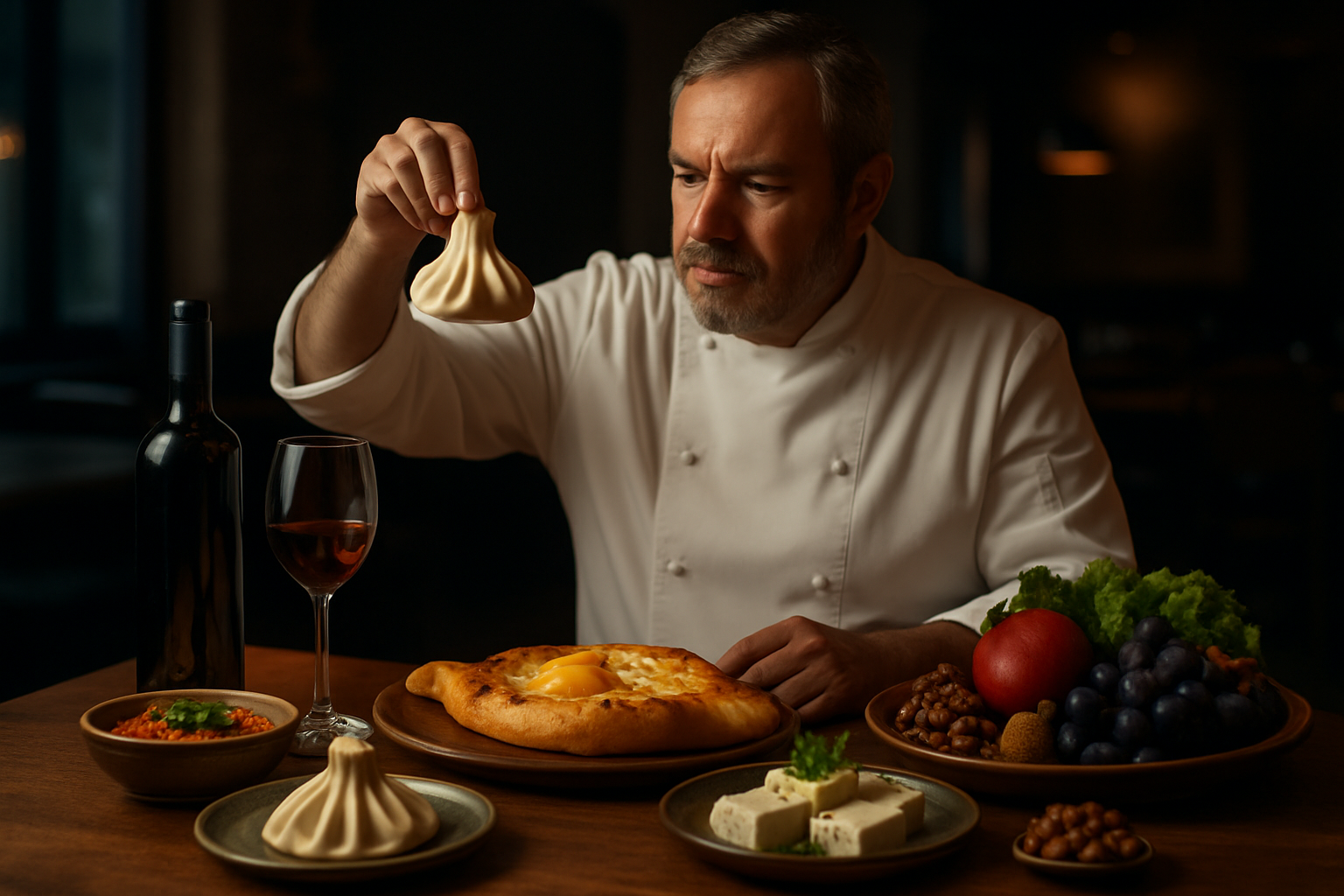Flavor Alchemy: Unconventional Pairings That Dazzle
Discover the art of combining unexpected ingredients to create culinary masterpieces. From sweet and savory fusions to daring texture combinations, this journey through flavor alchemy will challenge your taste buds and inspire your next kitchen adventure. Get ready to explore the science and creativity behind unconventional food pairings that will elevate your dining experience.

Sweet Meets Savory: A Delicious Contradiction
The interplay between sweet and savory flavors has long been a source of culinary intrigue. This contrast creates a complexity that tantalizes the palate and keeps diners coming back for more. Consider the magic that happens when dark chocolate is paired with blue cheese, or when figs are wrapped in prosciutto. These combinations work because they balance each other out, with the sweetness cutting through rich, salty flavors and vice versa. Chefs are pushing this concept further, incorporating savory elements into desserts and sweet notes into main courses. Imagine a goat cheese ice cream drizzled with olive oil and sprinkled with sea salt, or a caramelized onion tart topped with a scoop of vanilla bean gelato. These daring pairings challenge our preconceptions about what should go together, resulting in unforgettable taste experiences.
Texture Tango: Crispy, Creamy, and Everything In-Between
While flavor is crucial, texture plays an equally important role in creating memorable dishes. Contrasting textures can elevate a simple ingredient into something extraordinary. Picture the crunch of toasted pine nuts against the silky smoothness of burrata cheese, or the way crispy bacon bits complement the creaminess of a perfectly ripe avocado. Innovative chefs are taking texture combinations to new heights, introducing elements like powdered olive oil, vegetable foams, and edible dirt made from dehydrated mushrooms. These textural surprises not only add interest to the plate but also engage multiple senses, creating a more immersive dining experience. By carefully considering the mouthfeel of each component, cooks can craft dishes that are as exciting to eat as they are to taste.
Global Fusion: Cross-Cultural Culinary Creativity
In our interconnected world, culinary traditions from different cultures are colliding in exciting ways. This global fusion approach to cooking has given rise to some of the most innovative flavor combinations of the 21st century. Imagine sushi rolls filled with Mediterranean ingredients like feta and sun-dried tomatoes, or tacos stuffed with Korean bulgogi beef and kimchi. These cross-cultural creations celebrate the diversity of global cuisines while creating something entirely new. Chefs are drawing inspiration from traditional flavor profiles and applying them to unexpected ingredients, resulting in dishes like miso-glazed eggplant parmesan or curry-spiced roast chicken with Yorkshire pudding. This culinary globalization not only produces exciting new tastes but also fosters cultural understanding and appreciation through the universal language of food.
The Role of Aroma in Unexpected Pairings
Often overlooked but crucial to the success of unconventional pairings is the role of aroma. Our sense of smell is intimately linked with our perception of taste, and innovative chefs are harnessing this connection to create multi-sensory experiences. By considering the volatile compounds that create scent, it’s possible to pair foods that might seem incompatible based on taste alone. For example, the earthy aroma of truffles can complement the sweetness of vanilla in a savory dish, while the floral notes of lavender can enhance the flavor of grilled lamb. Some restaurants are even experimenting with scent diffusers to prime diners’ palates before a dish arrives. By paying attention to aromatic profiles, home cooks can elevate their own culinary creations, using herbs, spices, and even essential oils to create harmonious and surprising flavor combinations.
Innovative Flavor Pairings to Try
-
Strawberries + Balsamic Vinegar: The acidity of balsamic enhances the berry’s sweetness
-
Watermelon + Feta: A refreshing mix of sweet, salty, and tangy
-
Dark Chocolate + Olive Oil: Adds depth and richness to chocolate desserts
-
Bananas + Curry: A surprising twist on both sweet and savory dishes
-
Coffee + Orange: Enhances the complexity of coffee-based desserts
-
Basil + Strawberries: A fresh, aromatic combination for summer drinks or salads
-
Avocado + Cocoa: Creates a rich, creamy base for unique desserts
-
Pineapple + Chili: Sweet heat that works in both savory and sweet applications
-
Corn + Blueberries: A unexpected duo that shines in summer salads
-
Cauliflower + Cocoa: Adds depth to roasted cauliflower dishes
Embarking on a journey of flavor alchemy opens up a world of culinary possibilities. By understanding the science behind flavor pairings, embracing contrasts in taste and texture, and drawing inspiration from global cuisines, we can create dishes that are truly greater than the sum of their parts. The key is to approach cooking with an open mind and a willingness to experiment. So the next time you’re in the kitchen, don’t be afraid to mix things up. Combine ingredients you never thought would work together, play with textures, and let your senses guide you. Who knows? You might just discover the next great flavor pairing that will revolutionize the culinary world.





